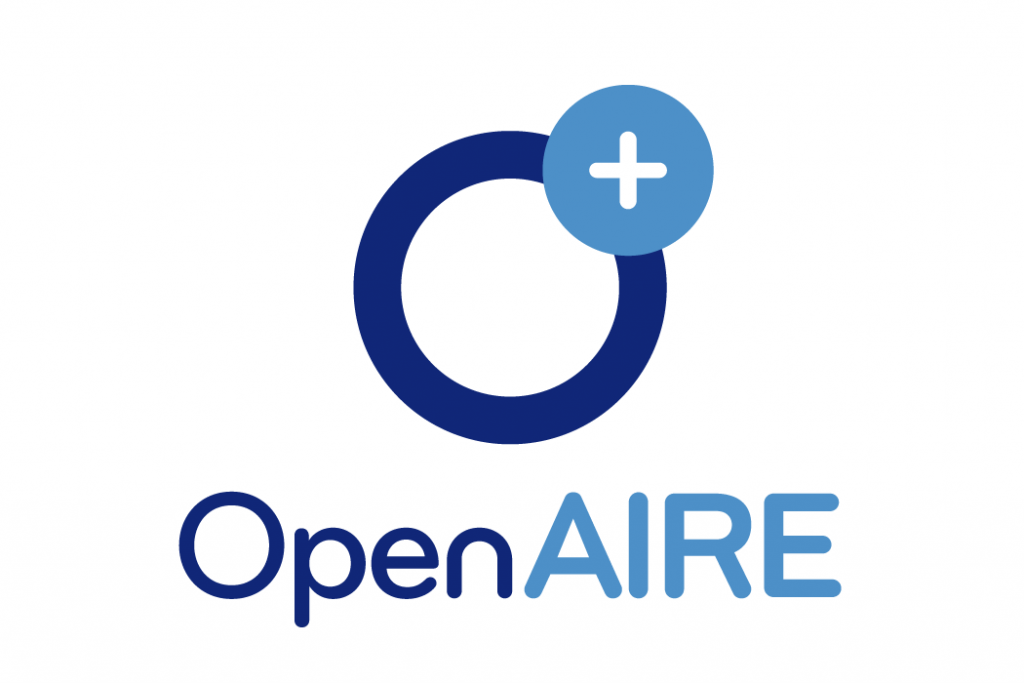Dating the Russian Business Cycle, Identifying Coherence and persistence in Its Major Macroeconomic Indicators
Keywords:
BBQ algorithm, Business cycle, Causality, GDP, RussiaAbstract
This study attempts to examine the business cycle, coherence, and persistence of the GDP, investment, export, consumption, and savings from the period 1992 to 2019. We used Bry and Boschan quarterly (BBQ) algorithm to examine the business cycle, and Granger causality and correlation tests to examine the coherence and persistence, respectively. The BBQ algorithm showed that the expansion periods ranged from 12 quarters to around 32 quarters; the contraction period ranged from 5 quarters to around 9 quarters. According to the results, the investment, export, consumption, and savings were hit by the 1998 rouble crisis, 2008 global and 2014 Russian financial crisis. The causality test showed that there are bidirectional causal relationships between investment and GDP, as well as between savings and GDP. Additionally, the data imply that there is one-way causation between consumption and GDP, as well as between trade and GDP. The majority of variables, except for export, are extremely procyclical. As can be observed, all variables are persistent, which means that their values do not considerably deviate from those of their preceding period. While trade and investment are significant, their persistence rate is weak in comparison to the other variables. The Great Recession, the Ruble crisis, and the post-crisis economic situations have provided a chance for Russia to reconsider and expedite economic reforms, as well as encourage diversification. The majority of these difficulties will need robust and comprehensive reform measures.
References
References
Abel, A. B. and Bernanke, B. (1998) Macroeconomics. Addison-Wesley.
Aganbegyan, A. G. (2014) “Social and economic development of Russia: an analysis and a forecast,” Studies on Russian economic development. Springer, 25(4), pp. 319–328.
Agarwal, S. (2005) “Russia Rebounds,” Finance India; Delhi volume. search.proquest.com, pp. 1477–1480. Available at: https://search.proquest.com/openview/f621bcc6ffac104d0bde306ad7484dae/1?pq-origsite=gscholar&cbl=27511.
Alhaddad, M. M. (2017) “The Impacts of EdTech Collaboration, IoT-Connected Classroom and Intelligent Grading System on Educational Performance,” Advances in Contemporary Science and Technology, 2(1), pp. 44–67.
Alhaddad, M. M. (2018) “Artificial Intelligence in Banking Industry: A Review on Fraud Detection, Credit Management, and Document Processing,” ResearchBerg Review of Science and Technology . researchberg.com, 2(3), pp. 25–46.
Arlashkin, I. et al. (2018) “Russia’s Fiscal Policy in 2017,” Available at SSRN. doi: 10.2139/ssrn.3212688.
Bernanke, B. S. and Rotemberg, J. J. (1997) Nber Macroeconomics Annual 1997. MIT Press.
Bogetic, Z. (2009) “Russian Economic Report.” doi: 10.2139/ssrn.1805779.
Brainerd, E. (1998) “Winners and Losers in Russia’s Economic Transition,” The American economic review. American Economic Association, 88(5), pp. 1094–1116.
Bry, G. and Boschan, C. (1971) “Programmed selection of cyclical turning points,” Cyclical analysis of time series: Selected procedures. nber.org. Available at: https://www.nber.org/system/files/chapters/c2148/c2148.pdf.
CSIS (2017) Economic Change in Russia. Available at: https://www.csis.org/programs/russia-and-eurasia-program/archives/economic-change-russia (Accessed: April 8, 2018).
Djankov, S. and Others (2015) Russia’s economy under Putin: From crony capitalism to state capitalism. Peterson Institute for International Economics. Available at: https://www.piie.com/sites/default/files/publications/pb/pb15-18.pdf.
Efremov, S. (2019) The Challenges of Russia’s Economy: An Overview. Available at: https://www.ispionline.it/en/pubblicazione/challenges-russias-economy-overview-24314 (Accessed: August 11, 2019).
Evstigneev, S. S. (2019) “THE MODEL OF THE ACCELERATOR-MULTIPLIER ON THE EXAMPLE OF RUSSIAN ECONOMY,” Modern Science. elibrary.ru. Available at: https://elibrary.ru/item.asp?id=37219392.
Fanelli, J. M. (2007) Regional Arrangements to Support Growth and Macro-policy Coordination in MERCOSUR. UN.
Federal Reserve Bank of Minneapolis (1994) Quarterly Review. Federal Reserve Bank of Minneapolis.
Feige, E. L. (2017) “The transition to a market economy in Russia: property rights, mass privatization and stabilization,” A Fourth Way? taylorfrancis.com. Available at: https://www.taylorfrancis.com/chapters/edit/10.4324/9781315021447-4/transition-market-economy-russia-property-rights-mass-privatization-stabilization-edgar-feige.
Gabisch, G. and Lorenz, H. W. (2013) “Business cycle theory: a survey of methods and concepts.” books.google.com. Available at: https://books.google.com/books?hl=en&lr=&id=vlnmCAAAQBAJ&oi=fnd&pg=PA1&dq=business+cycle+macroeconomics&ots=EzliC3lR0o&sig=IgBdoSvF5FoJI0gcXZMY5WbwL7U.
Galeeva, G. M., Ivanov, M. E. and Vafin, A. Y. (2016) “The innovative development of the industrial economy of Russia,” core.ac.uk. Available at: https://core.ac.uk/download/pdf/197473691.pdf.
Granger, C. W. J. (1969) “Investigating Causal Relations by Econometric Models and Cross-spectral Methods,” Econometrica: journal of the Econometric Society. [Wiley, Econometric Society], 37(3), pp. 424–438.
Grant, A. R. and Hansl, B. (2015) Russia economic report: the dawn of a new economic era? The World Bank.
Harding, D. and Pagan, A. (2002) “Dissecting the cycle: a methodological investigation,” Journal of monetary economics. Elsevier. Available at: https://www.sciencedirect.com/science/article/pii/S0304393201001088.
Ihori, T. and Kameda, K. (2018) Procyclical Fiscal Policy. Springer.
Jacobs, J. (1998) Econometric Business Cycle Research. Springer Science & Business Media.
Jahan, S. and Mahmud, A. S. (2013) “What is the output gap,” Finance & development. pavelsolis.github.io, 50(3), pp. 38–39.
Kontorovich, V. (2001) “Economic Crisis in the Russian Far East: Overdevelopment or Colonial Exploitation?,” Post-Soviet geography and economics. Routledge, 42(6), pp. 391–415.
Kryukova, E. M., Vetrova, E. A. and Maloletko, A. N. (2015) “Social-economic problems of Russian mono-towns,” Asian Social. Citeseer. Available at: https://citeseerx.ist.psu.edu/viewdoc/download?doi=10.1.1.990.2105&rep=rep1&type=pdf.
Kuboniwa, M. (2015) “The impact of oil prices, total factor productivity and institutional weakness on Russia’s declining growth,” The challenges for Russia’s politicized economic. books.google.com. Available at: https://books.google.com/books?hl=en&lr=&id=2poGCAAAQBAJ&oi=fnd&pg=PA113&dq=russia+7.8+percent+in+2009+as+oil+prices+&ots=7YbSAWdqtv&sig=LiYj9mGt7N5TigmdSRTnlx0_x6o.
Kullberg, J. S. and Zimmerman, W. (1999) “Liberal Elites, Socialist Masses, and Problems of Russian Democracy,” World politics. Cambridge University Press, 51(3), pp. 323–358.
Li, K.-W. (2012) Economic Freedom: Lessons Of Hong Kong. World Scientific Publishing Company.
Medvedev, D. (2015) “A new reality: Russia and global challenges,” Russian Journal of Economics. Elsevier, 1(2), pp. 109–129.
Petersen, A. and Barysch, K. (2011) Russia, China and the Geopolitics of Energy in Central Asia. Centre for European Reform.
Roaf, M. J. et al. (2014) Regional Economic Issues--Special Report 25 Years of Transition: Post-Communist Europe and the IMF. International Monetary Fund.
Romer, C. D. (2008) “Business cycles,” The concise encyclopedia of economics. econlib.org. Available at: https://www.econlib.org/library/Enc/BusinessCycles.html.
Sørensen, P. and Whitta-Jacobsen, H. (2010) Introducing Advanced Macroeconomics: Growth and Business Cycles 2e. McGraw Hill.
Tanning, L. and Tanning, T. (2014) “How Former Post-socialist Countries Have been the Economic Crisis?,„,” Transactions on Economic Crisis. scholar.archive.org, 1(3), pp. 2372–3254.
Tiusanen, T. and Others (2003) “Development of the Russian Rouble-the crisis of 1998 and its aftermath,” Publication-Northern Dimension Research Centre. lutpub.lut.fi. Available at: https://lutpub.lut.fi/bitstream/handle/10024/31017/TMP.objres.345.pdf?sequence=1.
Urasawa, S. (2007) Business Cycle Fluctuations in Japanese Macroeconomic Time Series: 1980-2000. Economic and Social Research Institute, Cabinet Office.
Vafin, A. (2017) “The Impacts of Performance Records, Influence Potential and Passion on Leadership Training Productivity,” Journal of Modern Issues in Business Research. hcommons.org. Available at: https://hcommons.org/deposits/item/hc:44885/.
Vafin, Aidar (2018) “Should Firms Lower Product Price in Recession? A Review on Pricing Challenges for Firms in Economic Downturn,” ResearchBerg Review of Science and Technology . researchberg.com, 2(3), pp. 1–24.
Vafin, A. (2018) “Volume Discount Sensitivity Analysis for Optimal Pricing Strategies in B2B Firms,” Empirical Quests for Management Essences. researchberg.com, 2(4), pp. 15–29.
Вафин, А. М. (2012) “Индикативное планирование как основа стратегического развития промышленного комплекса Республики Татарстан,” Научные труды Центра перспективных. elibrary.ru. Available at: https://elibrary.ru/item.asp?id=20789721.
Вафин, А. М. (2013) “Индикативное планирование как инструмент реализации промышленной политики в регионе,” Вестник экономики, права и социологии. cyberleninka.ru. Available at: https://cyberleninka.ru/article/n/indikativnoe-planirovanie-kak-instrument-realizatsii-promyshlennoy-politiki-v-regione.

Downloads
Published
How to Cite
Issue
Section
License
Copyright (c) 2019 Author

This work is licensed under a Creative Commons Attribution-NonCommercial-NoDerivatives 4.0 International License.
Creative Commons licenses are used to publish Open Access articles, which provide the legal basis for users to access, distribute, and reuse the content. EQME allows authors to apply one of the following Creative Commons licenses to their work, each of which affords readers distinct rights in terms of commercial use and the capacity to create derivative versions:
CC-BY (Creative Commons Attribution License)
CC-BY-NC-ND (Creative Commons Non-Commercial No Derivatives License)
CC-BY-NC-SA (Creative Commons Non-Commercial Share-a-like)
In each situation, the creator must be given credit, and if derivative versions of the work are created, the alterations must be noted.






